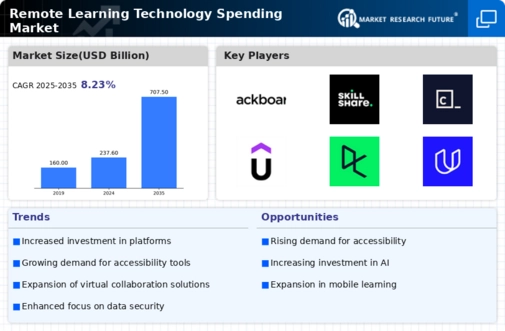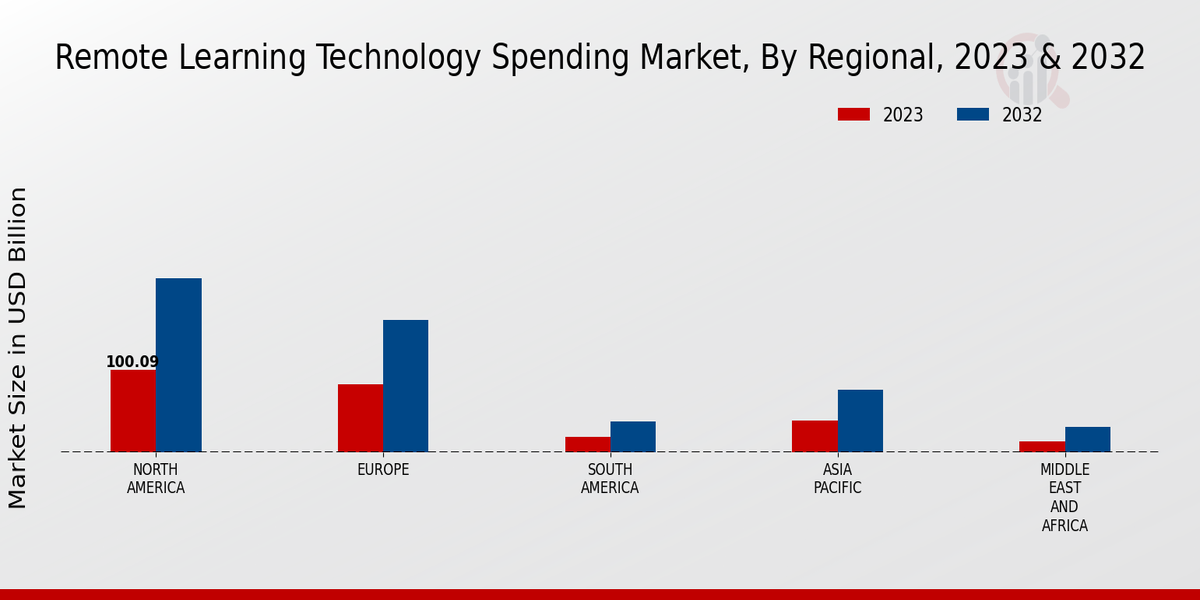Remote Learning Technology Spending Market Summary
The Global Remote Learning Technology Spending Market is projected to grow from 296.36 USD Billion in 2024 to 707.51 USD Billion by 2035.
Key Market Trends & Highlights
Remote Learning Technology Spending Key Trends and Highlights
- The market is expected to experience a compound annual growth rate of 10.43 percent from 2025 to 2035.
- By 2035, the market valuation is anticipated to reach 707.5 USD Billion, indicating robust growth.
- in 2024, the market is valued at 296.36 USD Billion, reflecting a strong foundation for future expansion.
- Growing adoption of remote learning technology due to increasing demand for flexible education solutions is a major market driver.
Market Size & Forecast
| 2024 Market Size | 296.36 (USD Billion) |
| 2035 Market Size | 707.51 (USD Billion) |
| CAGR (2025-2035) | 8.23% |
Major Players
D2L Corporation, Blackboard Inc., Skillshare, Codecademy, Udemy, DataCamp, Udacity, Pluralsight, Coursera, LinkedIn Learning, edX



 Source: Primary Research, Secondary Research, MRFR Database and Analyst Review
Source: Primary Research, Secondary Research, MRFR Database and Analyst Review
















Leave a Comment